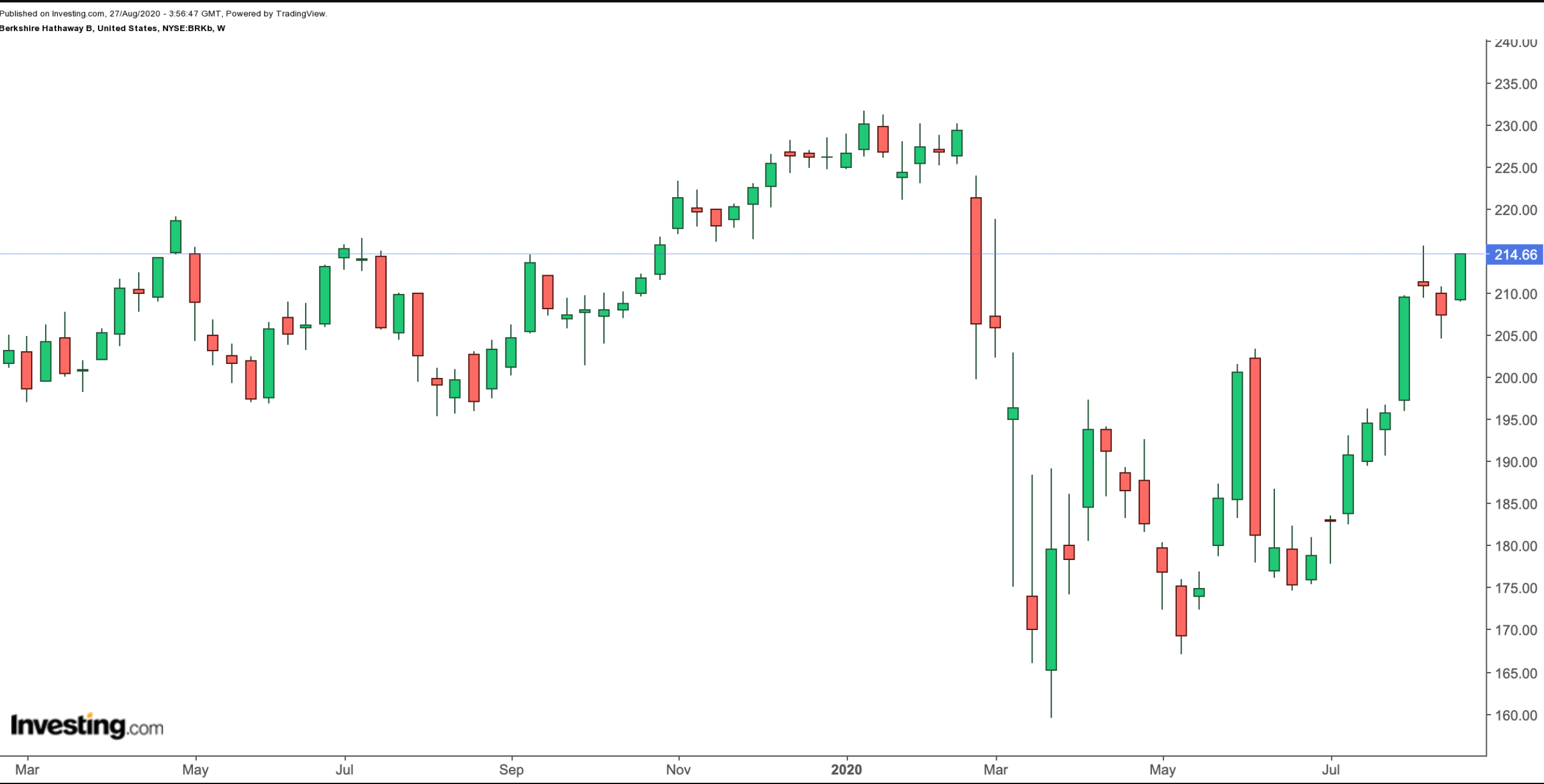When Warren Buffett—one of the most successful market investors of all time and CEO and Chairman of Berkshire Hathaway—buys or sells shares, the investment community sits up and pays attention. Another way investors gain insight into Buffet's views on specific industries and the global economy: his annual shareholder letters where both strategy and holdings are addressed.
Here we'll breakdown how investors can add some of Buffett's current holdings to their portfolios:
Value Stocks And The Gold Surprise
In his twenties, Buffett worked for Benjamin Graham, widely regarded as the father of value investing. By 1963, Buffett became the single largest shareholder of Berkshire Hathaway (NYSE:BRKa), (NYSE:BRKb), a struggling textile manufacturer at the time. Over the decades, his team has turned it into a holding company with a $510 billion market capitalization.

Berkshire Hathaway's regular 13F filings with the Securities and Exchange Commission (SEC) detail its holdings. The most recent filing of Aug.14 showed that Berkshire Hathaway bought a 20.9 million-share stake in the Toronto, Canada-based mining group Barrick Gold (NYSE:GOLD), one of the largest gold miners globally.
Buffett’s move shocked Wall Street. The “Oracle of Omaha” as he's often known, has never before been a fan of gold. In his 2011-shareholder letter, Buffett detailed his negative view on investing in gold, citing its lack of utility and failure to provide income by way of interest or dividends.
It's unclear if Buffet's views on gold have fundamentally shifted or whether the new generation of investment managers at Berkshire Hathaway simply have a different take on the precious metal. Either way, Buffet generally favors:
“Investment in productive assets, whether businesses, farms or real estate. Ideally, these assets should have the ability in inflationary times to deliver output that will retain its purchasing-power value while requiring a minimum of new capital investment.”
For example, Berkshire Hathaway has been a long time holder of consumer goods staple Coca-Cola (NYSE:KO) and currently owns over 5% of tech giant Apple (NASDAQ:AAPL). 
ETFs Offering Access
In addition to buying stocks of companies outright for a long-term portfolio, exchange-traded funds can also provide more diverse exposure.
Buying shares of Berkshire Hathaway would be one option. However, there are also three ETFs that hold BRK.B shares, including SPDR® Portfolio S&P 500 Value ETF (NYSE:SPYV)—covered here, the Financial Select Sector SPDR® Fund (NYSE:XLF)—covered here and Davis Select US Equity (NASDAQ:DUSA).
Looking for ETFs for Apple stock exposure over the new decade? iShares Core S&P Total US Stock Market ETF (NYSE:ITOT) — covered here, the Technology Select Sector SPDR® Fund (NYSE:XLK), Invesco S&P 500® Top 50 ETF (NYSE:XLG) and the iShares Global 100 ETF (NYSE:IOO).
Finally, those investors who also would like to buy gold or gold miners can consider the SPDR® Gold Shares Fund (NYSE:GLD) or SPDR Gold MiniShares (NYSE:GLDM), the VanEck Vectors Gold Miners ETF (NYSE:GDX) or the VanEck Vectors Junior Gold Miners ETF (NYSE:GDXJ)—all covered here.
However, traders who are planning to participate in the recent gold rush via investing in leveraged ETFs, such as the Direxion Daily Junior Gold Miners Index Bull 2X Shares (NYSE:JNUG)—covered here—would need to weigh the risks of directional bets via gearing.
Bottom Line
Analyzing trades by companies like Berkshire Hathaway may give a glimpse into how smart money is allocating capital in equity markets. Retail investors should do their research on individual stocks and ETFs before buying. In the coming quarters, as Berkshire Hathaway updates its holdings, we may revisit this topic to discuss what other appropriate ETFs.
